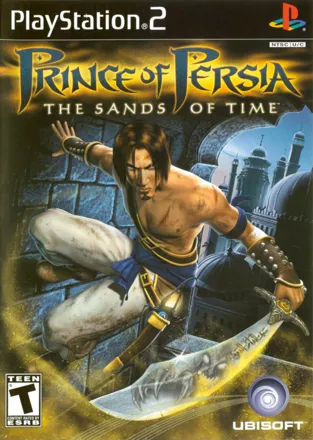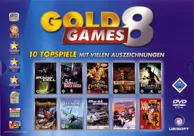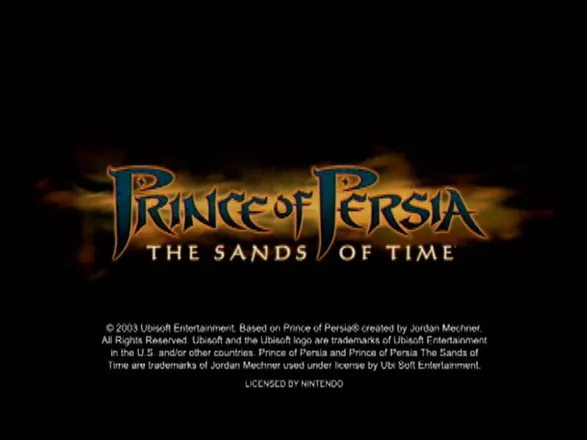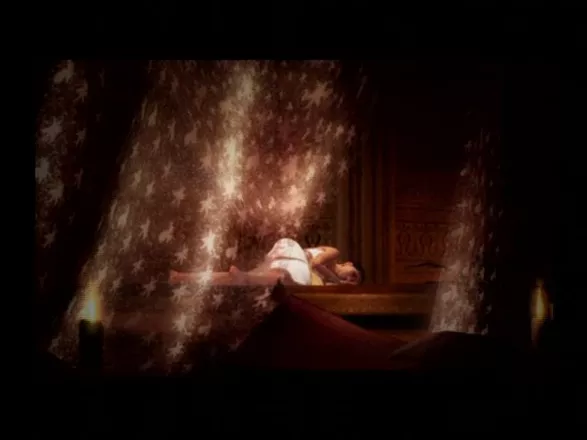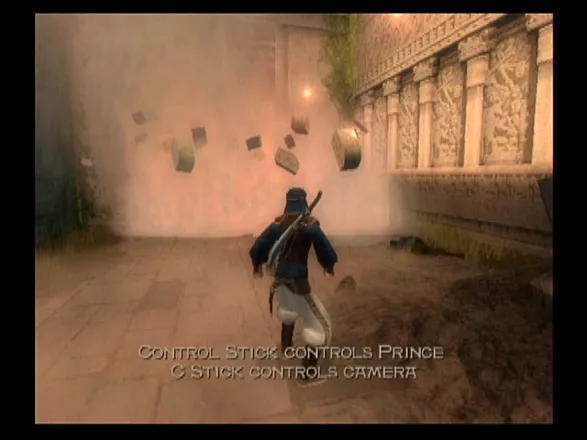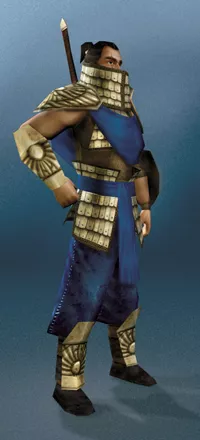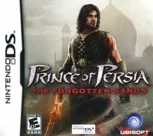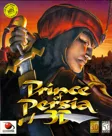Prince of Persia: The Sands of Time
-
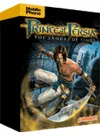 Prince of Persia: The Sands of Time
(2003 on
BREW,
J2ME,
Symbian)
Prince of Persia: The Sands of Time
(2003 on
BREW,
J2ME,
Symbian)
-
 Prince of Persia: The Sands of Time
(2003 on
Game Boy Advance)
Prince of Persia: The Sands of Time
(2003 on
Game Boy Advance)
Description official descriptions
The King and the Prince of Persia are besieging the Maharajah's castle to plunder the treasures hidden inside. In order to impress his father, the Prince sneaks inside to recover the magical Dagger of Time. He quickly learns that this dagger has the ability to control time. The malevolent Vizier has other plans for the dagger, however, and tricks the Prince into unlocking a mysterious secret of the Dagger that causes the King and many of his subjects to be turned into sand zombies. Now, the Prince must figure out what has happened and try to set things right again.
Prince of Persia: The Sands of Time is an action game with platforming and puzzle-solving elements. It updates many of the gameplay concepts from the previous games, and brings them into a fully three-dimensional world. The Prince will engage in sword fighting, wall climbing, spike dodging, puzzle solving, and more in his quest. The Prince also carries the Dagger of Time, which allows him to unleash several magical powers. The most important of these powers is the ability to reverse time. This ability allows the player to reverse their actions when they lead the Prince to his death.
Spellings
- Принц Персии: Пески Времени - Russian spelling
- 波斯王子:时之砂 - Simplified Chinese spelling
- 波斯王子:遺忘之砂 - Traditional Chinese spelling
Groups +
- Covermount: Fullgames
- Covermount: Level (Romania)
- Game Engine: JADE
- Gameplay feature: Time manipulation
- Games made into movies
- Games with hidden / unlockable full games
- Green Pepper releases
- Middleware: Bink Video
- PlayStation 2 Greatest Hits releases
- PlayStation 2 Platinum Range releases
- Prince of Persia series
- Protagonist: Royalty
- Setting: Indian
- Software Pyramide releases
- Theme: Time travel
- Ubisoft eXclusive releases
- Xbox Platinum Hits releases
Screenshots
Promos
Videos
Add Trailer or Gameplay Video +1 point
See any errors or missing info for this game?
You can submit a correction, contribute trivia, add to a game group, add a related site or alternate title.
Credits (PlayStation 2 version)
250 People (223 developers, 27 thanks) · View all
| Producer | |
| Creative Director | |
| Lead Programmer |
|
| Lead Level Designer |
|
| Art Director | |
| Animation Art Director | |
| Art Production Manager | |
| Animation Production Manager | |
| Sound Designer | |
| Writer | |
| Game Designer | |
| Creative Consultant | |
| Associate Producer | |
| Level Design Team | |
| Programing Team |
|
| [ full credits ] | |
Reviews
Critics
Average score: 91% (based on 115 ratings)
Players
Average score: 3.9 out of 5 (based on 246 ratings with 10 reviews)
Is this finally a successful revitalization of an old series?
The Good
In Prince Of Persia: The Sands Of Time you play the prince who of coarse is the son of the king of Persia with a vizier helping them who has more intentions than clear by breaking in the Maharajah’s vault and unleashing the sands of time which turns all but The Prince, Farah the maharajah’s daughter and the vizier because they each have a special artifact that protects them The dagger of time, a Medallion, And a staff.
But the dagger doesn’t just protect the prince from the curse it also allows the prince to reverse time when he gets in a sticky situation and you will need it a lot it’s not so helpful in combat but in the platforming elements it is which sometimes it can be difficult to figure out exactly where you are supposed to go the game has a very storybook type feel having the prince narrate the story.
The Bad
One of the strange things that happens because he tells the story when you die you’ll say something like “No no, no that’s not how it happened” then how does it happen? As if in the middle of the story the listener blurted out “And then you died?”
The combat also isn't particularly good with a lack of moves and the fact you have to finish the enemies with the dagger of time and the only things you can do is a regular attack and what is called a vault in which you jump over the enemy and attack as you come down which later enemies can block which can lead to some frustrating moments but was fixed in Warrior Within but that’s for another review.
The Bottom Line
Overall if you liked the original or you are looking for a fun new action game pick this one up.
Xbox · by Classic Nigel (108) · 2006
Behold the dawning of a new standard in action/platforming.
The Good
“Most people think of time as a river, flowing swift and sure in one direction. But I have seen the face of time, and I can tell you they are wrong: Time is an ocean in a storm. Sit down, and I will tell you a tale like none you have ever heard.”
The persian king Shahraman and his army return home after a great victory over the indian maharajah, with bags full of treasures and new women for the king's harem. In the way they stop to visit the rajah's palace. As a sign of friendship, king Shahraman gives the rajah an enormous and beautiful hourglass. The rajah approaches it with wondering eyes. “Why are the sands glowing?”, he asks.
The former maharajah's vizier, now at king Shahraman's service, steps forward and explains: “These are the Sands Of Time. Inside this hourglass there lies a marvel like none ever seen by any man. But alas, only the Dagger of Time can unlock the hourglass...”
The vizier stares at king Shahraman's son. The Dagger is the treasure the young prince claimed as his own.
Farah, daughter of the maharajah and now a prisoner of the persian king, makes an attempt at a warning: “Don't do it!” --but it's too late. The prince of Persia already sank the dagger in a key-lock mechanism on the hourglass.
As the hourglass opens, something is released with the sands. Whatever it is has certainly never been seen by any man... but it isn't any kind of marvel either.
Prince of Persia - The Sands of Time (from now on we'll just call it PoP, shall we? there's a 20KB limitation for reviews at this website... which I'm now closer to clash with, thanks to this pointless observation) takes the flag of an old side-scrolling platformer created by a wiz called Jordan Mechner, which made history with its incredibly realistic character animation, imaginative platform puzzles, and complex sword-based battle system. In 1989
Now, in this era of floating-point calculated 3D environments, massive poly-count motion-captured character models, and multiple programmable per-pixel shading effects, Ubisoft Montreal comes up with another heir to the legend, trying to set new standards.
THE VISUALS: The mandatory DX9 bells & whistles
Talking about good looking graphics is almost a waste of time nowadays. Even in those rare cases in which the character models don't sport mind-bendingly huge amounts of polygons, the programmable pixel and vertex shaders allow a fairly easy implementation of a sheer amount of special effects.
PoP is a good example of the above sentence. The models actually have a VERY low amount of polygons (more on this in a minute); but the textures, the shadows, the lighting, the special effects, the design of the environments, the details in the decorations --they are all impressive enough as to divert your attention and even make you think: “Wow, this game looks amazing!”, not noticing that the maharajah's daughter doesn't even have fingers in her hands.
There's an option to apply a lighting effect called "bloom", which gives graphics some sort of misty quality and works as a surprisingly effective inhibitor for the infamous jaggies, and at the same time adds nicely to the general Arabian Nights' Tales theme.
Furthermore, there's the treat of watching it all in motion. It's simply amazing. The camera makes all these crazy zooms and pans and whatnot, transforming each jumping puzzle in a small action movie. In this regard, the cutscenes show a brilliant direction and sport all those effects we are so used to see in modern action movies: Odd camera takes, slow-motion movement, physics-defying acrobatics, et cetera. There are a few pre-rendered cutscenes (at the beginning and near the ending), but the ones with in-game graphics have little to envy from them anyway.
SOUND & MUSIC: Iran Rocks!
I don't usually pay much attention to music in games, since only in a few, rare occasions I found a soundtrack I considered worth of mention. Well, PoP is one of those rare examples.
As I said many times before, I suck at describing music, so I'll go through the heresy of calling these "some sort of mixture between typical arabian music and rock n' roll guitars".
That might very well not tell you anything, but just stay on me: The music is great, it matches the action perfectly, and it's so good you might consider hunting down the soundtrack. After you beat the game the credits roll with a beautiful vocal song that alone makes the whole experience worth it.
Finally, I played the spanish version of PoP, which is fully dubbed. Whoever played the spanish version of any game knows how awful the dubbing actors usually are, and if you can compare, it's heart-grindingly painful to hear how badly they butcher the original acting --well for the first time ever I don't have a single complaint about the voices.
I ignore who did the spanish dubbing in this game, but they did a solid work.
GAMEPLAY: Define "smooth"
Simply put, PoP offers the smoothest gameplay system ever --EVER.
Oddly enough, you get to perform a lot of combat movements with one single attack button, depending on contextual circumstances such as the direction you move while attacking, or the position of the enemies around you: Slash one enemy in front of you, and move the stick back pressing attack again, and our good prince will perform an elegant counter strike manoeuvre against whoever was lurking behind him. Move towards an enemy and press jump, and the prince will vault over him and land right behind, blades shining, ready to give some soup. Run towards a wall and press jump twice, and the prince will rebound-jump off the wall, vaulting over the nearest enemy. Press the attack button repeatedly while pointing towards each enemy around you and, as long as there are targets at hand, the prince will engage in a deadly and elegant ballet of hack & slash combos, taking down everything in his path. Block an enemy blow in the exact moment the blades clash and press the attack button, and the prince will kick the enemy and take him down with his sword.
At times, you get to pull so many different moves in a single fight that you might wonder whether you're actually playing or just pointlessly shaking the sticks and hitting buttons to an awesome cutscene.
For the better part of the game you'll enjoy the company of Farah, the maharajah's daughter. She will help you solving some puzzles, and as she has a bow and arrows she'll also help in the fights. Farah happens to be a fairly good fighter, so this is one of those extremely rare games in which your sidekick not only is far from a burden, but she's actually useful! Oh the shock!
All the fantastic combat moves I just talked about are nothing when it comes to the prince's abilities to face the platform puzzles.
This agile lad can walk, run, jump, hang from ledges, climb up / slide down ladders and columns, walk across tightropes, swing on ropes, swing on flagpoles, shimmy across ledges, rebound-jump off walls, and my favourite: Run up and along walls.
Yep, our man in Persia can actually walk on walls. Neo was a fag.
As you might have guessed, all these movements can be combined in order to come up with some outstanding acrobatic combos, and in fact you will be required to do so, as the game focuses heavily in progressively harder platform puzzles.
For example, let's say you come doing the merry shimmy across a ledge, until you a see another ledge above you. Jump, grab, pull yourself up. Solid ground, phew. But then walk a few steps and, crap, a large chasm, across which you can see a flagpole. So you take a deep breath, start running along the wall (while running you come across a few hanging banners, which will nicely wave as you run by them), and once you're in the right spot you rebound-jump off the wall and grab the flagpole. Swing on it, and jump off towards the nearby wall, off of which you'll rebound-jump and grab a ledge above the flagpole. Turns out this ledge is right at the bottom of a narrow chimney-like vertical space, so you'll jump forward, rebound-jump off the wall, and you'll start a rebound-jumping-spree between enclosed walls until you climbed high enough as to grab another ledge. Pull yourself up. Phew, solid ground again...
The design of these platform puzzles is simply brilliant, basically requiring you to solve them in two stages: First figuring out the course you'll have to take, and second actually running through that course.
As you progress in the game, the platform puzzles will grow larger and more complex, requiring you to combine more and more acrobatics in order to beat them, and eventually featuring timed sections so properly timing your movements becomes a factor as well... rest assured you won't get bored easily.
But there is more! Throughout the game there are a number of "regular" puzzles, the kind of massive room-sized puzzles we found in
For example, at one point in the game you need to re-arrange a number of mirrors in a large two-stories library in order to get a thin stream of sunlight to trigger a certain photosensitive device. Fairly easy to figure out, it does require some thinking in the actual solving, as I think every puzzle should be.
Of course, maybe you're like me, and you still want more --well THERE IS MORE!
From the moment you get the Dagger of Time, you'll be granted access to its several time-bending powers, among which count the ability to freeze enemies, slow down time (yep, much like
You can't possibly imagine how handy this last feature comes when you screw up the last jump of a long platform puzzle.
Finally, one thing that made me remember the recent
PoP, on the other hand, simply sports the best camera ever seen. Not only it makes some nice-looking cinematic shots by itself every now and then, but you can also control it at every moment.
And I do mean CONTROL IT.
You can zoom out to the point the whole scene looks like a 3D version of
Reading all this, you might think: “Jeeesus Christ in a motorbike! How complicated can be to perform all those things!?!”.
Well, it is not.
Controlling the prince and getting him to chain up the craziest combo of acrobatics while at the same time fighting four enemies could only be any easier if you could just project your mind onto the prince and command him through pure thought.
Barring that, playing with mouse and keyboard is as smooth as it gets. No control interface designed by a human being so far has been more user-friendly than this. Period.
Furthermore, if you're the lucky owner of a dual-stick gamepad, rejoice: You're in a gamer's paradise.
THE STORY: A cheese-free love story
When I started playing the game I thought of the story as a predictable and unsurprising "The Prince vs The Evil vizier" cliched tale. Since the gameplay was so enjoyable I didn't really care to think much more about it.
Then Farah showed up and we formed this team, and as the game progressed, these guys started this childlike push & pull, constantly going forth and back between fighting and flirting. Whenever I was left alone with the prince, his voiceovers made clear the way his feelings towards the girl were growing deeper by the minute. Granted, the outcome of this relationship could be guessed from the get-go, but the tale was told with so much class, a few humorous moments, and a surprising lack of cheap cheesiness, that it was totally enjoyable.
In fact, this "troublesome love story" sub-plot was much more enjoyable than the "main" story arc itself... until all of a sudden, in the last five minutes of gameplay, I came to understand the full joke. The whole "chase the vizier and lock the infamous hourglass" was in fact the sub-plot, merely a vehicle for the love story.
At the end of the game it all ties up and connects with the very beginning, closing a perfect circle with a major twist which, however predictable, oozes style as few things I've ever seen.
The ending itself, meaning the very closing phrase uttered by the prince -not without a delightful touch of bitterness, by the way- is brilliant in its own simplicity. In fact, this has to be one of the most rewarding endings I ever came to enjoy.
And then there comes the beautiful vocal song I mentioned above to which the credits roll, and you can't possibly deny that the whole package spells perfection.
The Bad
This game has to be the first in a good while in which I can't find a thing to complain about. Everything I usually care about in a game is nicely covered here: Everything I just described performs quite nicely in my awfully low-end box, and I haven't found one single bug or glitch of any kind. Not even the ever-present clipping issues.
The one thing I could whine about has to be the poly-count, especially when it comes to character models. The prince is fairly good, but the other characters have a noticeable low amount of polygons.
This can be understandable in the enemies, given the huge size of the environments, the massive amount of actors showing on scene at once, and the brief life they're going to have anyway; but Farah's model suffers from the same problem, and it tells. Especially since she doesn't even have fingers in her hands, and you will see those disturbingly hideous hands in some close-ups during certain cutscenes.
The Bottom Line
I'm not into medieval mid-eastern settings at all. In fact, I neglected this game for as long as I knew of its existence, despite the multiple praises I kept hearing all over the place. However, the moment I got a chance to test-drive it, I could only think of one thing: I HAVE GOT to own this game.
Without actually inventing anything new, PoP simply puts together the most challenging and imaginative platform puzzles and the smoothest combat interface I can remember.
On top of this, a simple yet beautiful love story told with a stylish narrative, and a conclusion to remember for years to come.
After I finished this game, and as the credits started rolling to the beautiful song, I felt a fulfilling sense of satisfaction as I felt few times before. Only a few of MAJOR storytelling masterpieces such as
PoP undoubtedly deserves a honor seat among my favourite games ever.
Finally, as some have said, the game IS short. However, I don't think of this fact as PoP's fault; but as a downside of every other game out there, for not offering half of what this one does.
Windows · by Slug Camargo (583) · 2009
The Good
As the sun arose, the Grand Vizier betrayed his Maharajah and signaled the forces of the King of Persia. They sprang upon the waking city which quickly fell before them and none was braver or bolder than the Persian Prince. Time and again, his blade found flesh, but his quest was not for blood but for glory. The Maharajah's Treasure Room was yet to be found, but the Prince would find its location and disarm its traps, bringing the Dagger of Time back to his father. Then, on the road home, laden with slaves, plunder, and an enchanted hourglass, the Persian Army stopped at a friendly Caliph's Palace. Here the Dagger of Time and the Hourglass of Time would come into contact, the Sands of Time spilling forth and swallowing all life. All but the Prince— was he protected by the Dagger of Time? But wait, there's one of the slave girls and where is the Vizier?
Such is the premise of Prince of Persia: The Sands of Time, an action/adventure game set within the huge environments of the Palace and its grounds. With aid from Farah, the slave girl with noble bearing, the Prince must find a way to undo what was been done. For, as the Prince tells us, "Most people think time is like a river that flows swift and sure in one direction. But I have seen the face of time and I can tell you they are wrong. Time is an ocean in a storm."
The Prince faces two major obstacles in his quest: Sand Creatures and the Palace itself. The Sands of Time have made zombies of the Palace residents, from the Harem girls to the famed birds in the Caliph's aviary. The Prince can strike them down again and again, but there is no final death until the Prince uses the Dagger of Time to drain the Sands away from them. That isn't all the Dagger can do. As the Prince progresses in the game, the Dagger gains the power to bend Time—hasten or slow events, or rewind events up to ten seconds in the past.
As for the Palace, between the destructive nature of the Sands and the traps which have been enabled, it is a perilous place to visit. Luckily for the Prince, he has some fancy moves. In addition to running and jumping, he can run along a wall or run up a wall, swing from various bars and do all manners of flipping and tumbling. While all this should feel lifted from The Matrix or Hong Kong action movies, it seems more like a natural extension of the Prince's abilities from the 2D games. Although, in those games, if the Prince fell to his death, it was game over; in this one you can rewind (or reload). Also unlike those games, the path is not always clear. Much of the fun of this game (probably eighty percent of it) is looking around the huge environments and figuring out what must be done. Is there a button that can be pressed by running along a wall? Can you leap from a broken column to a rope? Is that chasm narrow enough to leap from side to side down? There is some help in the form of visions the Prince has when he encounters Sand Portals (which also serve as Save Points) these visions show what may, or may not, come to pass.
The other twenty percent is action. Prince of Persia has the most fluid, articulated combat I've seen. Collision detection is top notch—I've inched away from enemy blades and narrowly deflected blows. Apart from just pressing the attack button, there are many advanced attacks the Prince will have to use to defeat his enemies: flipping over them and attacking them from behind, launching his self off walls, and more. More challenging, there are some enemies immune to special attacks, they'll throw you down if you try to leap over them or knock you aside.
Prince of Persia has an excellent story narrated by the Prince which allows for great payoffs like him saying, "No no, that didn't happen," if he dies or promising to pick up the story from save points. There is more character development than I expected from an action platformer, chiefly related to the relationship between the Prince and Farah, but also in growth of the Prince's character.
Graphics are breathtaking, offering huge environments with stunning detail. Prison cells have graffiti, heat from torches creates a shimmering effect, and this game passes the beautiful waterfall test. The character models move believably and have a Disneyesque level of detail—actually the game kind of feels like Aladdin and Jasmine versus the Army of Darkness. Sound is also incredible. Voice work, music, and ambient effects are all tremendous. Every element combines to create an immersive gaming experience, making this a modern classic.
The Bad
My one major complaint about Prince of Persia: The Sands of Time has to do with combat. I mentioned above that creatures only die when drained by the Dagger of Time, but there are often many waves of creatures. And the Prince is always outnumbered, even with Farah's assistance (using her Bow of Friendly Fire—don't ask). So combat is slick, stylish, smooth, etc… and goes on for way too long. With the exception of a few boss battles, combat in this game only serves to lengthen game play.
Which is my second complaint. Or observation. You can beat this game in a weekend. And other than spotting a few secret areas, there aren't branching paths or multiple endings which add a replay value. Not that you wouldn't want to re-experience this masterpiece, but as DarkDove mentions, it's even shorter the second time around.
The Bottom Line
I'm still amazed at the tremendous amount of thought that went into this game. If you pay attention, you can spot how Farah is able to make her way through the Palace when she isn't with the Prince. There are incredible puzzles equal to any in a traditional adventure game. And you have to love how carvings actually add to the story, rather than act as wallpaper. All that and off-hand references to obscure Persian heroes!
PlayStation 2 · by Terrence Bosky (5397) · 2004
Discussion
| Subject | By | Date |
|---|---|---|
| Random slowdowns... | chirinea (47496) | Aug 13, 2008 |
| Which control is best for this? | chirinea (47496) | Feb 23, 2008 |
Trivia
1001 Video Games
Prince of Persia: The Sands of Time appears in the book 1001 Video Games You Must Play Before You Die by General Editor Tony Mott.
Advertising
The Internet marketing for Prince of Persia: The Sands of Time was Ubisoft's most successful campaign so far. Ad agency Digital Outlook targeted 15-24-year-old males with ads featuring characters from the game and its "acrobatic action gameplay". A DHTML overlay showing the Prince slicing through the computer screen with his sword had a click-through rate of 26.1%. A streaming video ad, showing the gameplay, had a click-through rate of 23.43%. These rates were 4x higher than the host site's average.
Armitt, Claire. Prince of Persia: the Sands of Time. (Case Study)" New Media Age. May 6, 2004 p30.
Cover
The PlayStation 2 Greatest Hits budget release of the game confusingly uses the cover art of the 2010 game Prince of Persia: The Forgotten Sands.
Farah
Curious about how Farah feels about the Prince? Use the free-look button to look at her during the game to see how their relationship grows.
Murals
On the opening level, just after the room in which you first see the sands of time / giant hourglass, you find a water-filled passage that has 6 murals on the walls. The contents of the murals seem to describe the legendary history of the sands of time :
1) A blue god and winged goddess cradle the earth
2) A red demon kills the blue god as he sleeps
3) The red demon stalks the earth, eating humans
4) The blue god returns from the dead and strikes down the red demon with lightning
5) The blue god collects the sand from the red demon and pours it into an hourglass
6) The blue demon grow four arms - 2 sport the hourglass - 2 carry a sword and the severed head of the red demon. Humans worship at his feet.
Hidden games
The Playstation 2 and Gamecube versions feature a hidden version of the original Prince of Persia , which once unlocked can be played at will.
The X-Box version of the game features the first Prince of Persia, but also features a hidden Prince of Persia 2: The Shadow & The Flame, which will also show up as unlocked content.
The Windows version of the game does not feature either game hidden anywhere.
Rustam
Several times the main characters mention the "legendary" Rustam in comparison to what the Prince is able to do. Rustam was a Persian hero noted for his great strength. Born with prematurely gray hair, Rustam slew a rampaging white elephant with a single blow at the age of ten.
More at "Rustam." Encyclopedia Mythica. 2004. Encyclopedia Mythica Online.
Awards
- 4Players
- 2003 – Best Console Graphics of the Year (PlayStation 2)
- Computer Games Magazine
- March 2004 - #7 Game of the Year 2003
- Computer Gaming World
- March 2004 (Issue #236) – Action Game of the Year
- March 2004 (Issue #236) – Weapon of the Year (for the Dagger of Time)
- EGM
- February 2006 - #166 out of 200 of the "Greatest Games of Their Time"
- GameSpy
- 2003 – #10 Game of the Year (together with SoulCalibur II)
- 2003 – #4 Xbox Game of the Year
- 2003 – #9 GameCube Game of the Year
Information also contributed by Big John WV, PCGamer77, Rupert Breheny, Sciere and WildKard
Analytics
Upgrade to MobyPro to view research rankings!
Related Sites +
-
Prince-of-persia.com
Official website -
The Final Hours of Prince of Persia: The Sands of Time
Gamespot's extensive article about the production process of "Prince of Persia: The Sands of Time". -
Zarf's Mini-Review
A mini-review of the PlayStation 2 version of The Sands of Time by Andrew Plotkin (November, 2003).
Identifiers +
Contribute
Are you familiar with this game? Help document and preserve this entry in video game history! If your contribution is approved, you will earn points and be credited as a contributor.
Contributors to this Entry
Game added by quizzley7.
PlayStation 3 added by Charly2.0. PlayStation 2 added by Corn Popper. Xbox 360, Xbox One added by Plok. Windows added by Cyberzed. Xbox added by JPaterson.
Additional contributors: MAT, Terrence Bosky, Unicorn Lynx, Apogee IV, JRK, Johnny "ThunderPeel2001" Walker, Sciere, Simone Curti, Zeppin, Eltahriel, Patrick Bregger, FatherJack, 一旁冷笑.
Game added November 30, 2003. Last modified March 7, 2024.
